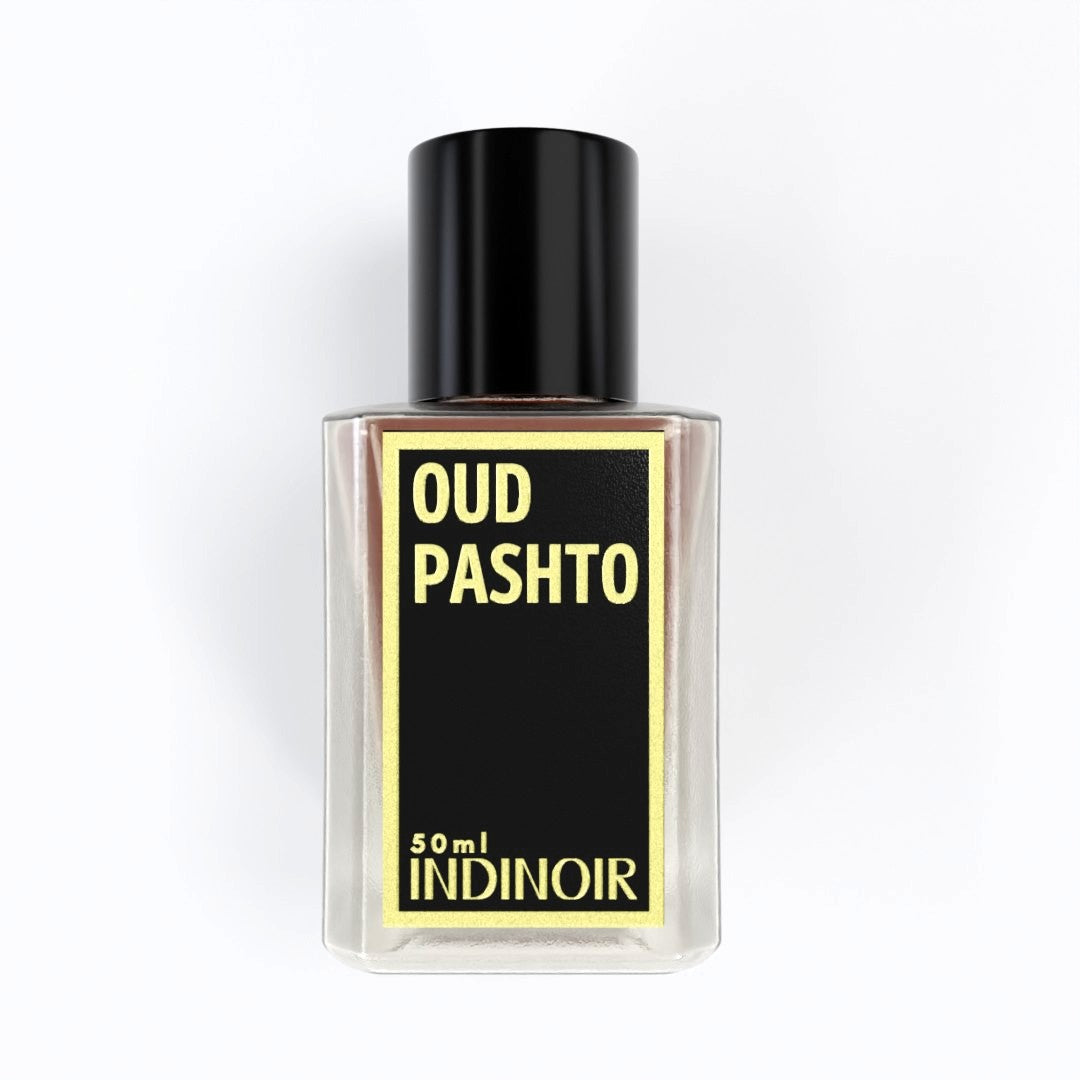Over the course of a perfume's life cycle, you'll sense many different notes. This is due to the various aromatics in the scent. Each aromatic, be it a compound, an oil or an essence, has a distinct identifiable character. General notes such as fruity, and spicy are easy to recognize. Still, things get tricky when a fragrance is more nuanced.
Today, we will dive into scent/fragrance families and subfamilies and how various notes interact in a scent. We'll also cover the very handy fragrance wheel or the olfactory wheel- visual depiction of types of scents.
Let's get into it, shall we?
Types of scent families
Over the years, there have been many iterations of perfume categories and scent types. The version largely accepted now was created by the legendary perfumer Michael Edwards. This, too, has gone through some changes over the decades since its first publication.
The taxonomy of types of scents and fragrances starts with four main groups or olfactory families. Each family has a general odor. And as you figure out the subtleties of an accord, you can further categorize them into subfamilies. The four fundamental scent types are floral, ambery/oriental, woody and fresh notes.
Fragrance wheel
The four fundamental accords each have almost a quadrant along the circumference of the wheel. Much like the color wheel, the sections between two families represent a combination of the two. For ease, we will cover each quadrant separately and discuss the general characteristics of the notes and the popular ingredients associated with each group.
We've also listed a few of our products as examples for each family. Take a look at the notes of these products to get a better understanding of how various families and subfamilies can be synthesized.
Floral notes
The true floral scents are classics that either highlight notes of a single flower (soliflore) or create a kaleidoscopic effect with many floral notes (bouquet). The floral family is arguably the most diverse. Perfumes can range from light and subtle to a richer and more complex combination. Some well-liked ingredients include rose, peony, lilies and freesia. The subfamilies are:
- Soft floral- Soft florals are the heavier, saccharine notes usually described as powdery. Aldehydes, violets, ylang-ylang, etc., are the key floral notes in these fragrances, with hints of musk to anchor them.
- Floral amber/oriental- They are a combination of floral and spice notes. This makes the scent warmer and adds depth to it. Sweet spices such as vanilla, patchouli, saffron, etc., are layered with floral notes of rose, jasmine, orange blossom, etc.
- Fruity- The soft floral and floral amber subfamilies lie between the floral and amber scent families. On the flip side, fruity fragrances are a combination of fresh and floral scents. Sweeter fruits such as berries, peach, apples, etc., are used to brighten the floral notes of the perfume.
Examples- Tiara, Orchid Noir, Spark Blossom, Peony Blush, Brunch at Tiffany's, Fleur De Paradis.
Amber/oriental notes
Amber notes are a mixture of ingredients that give you a warm, powdery scent. Some blends are sweet and spicy, while others may be edgier. Perfumes in this category have higher concentrations of resin notes to sweeten the spices. Myrrh and amber are the more discernible notes. True oriental fragrances are often described as sensual and heady. The subfamilies are:
- Soft ambery- Close to floral amber notes, soft ambers are more spicy than floral. Sweet spices such as vanilla, cardamom, anise, cinnamon, etc., are a few common ingredients used in this subfamily.
- Woody ambery- In this subfamily, the ambery/ oriental scents are more earthy due to additions of woody notes and can be rich and potent. The sweetness is creamy and smooth as opposed to powdery florals. Patchouli and sandalwood are key ingredients in perfumes with woody ambery notes.
Example- Wood Amber, Blue Sun, 1000 Miles, Dark Sugar, Silver Beast
Woody notes
These long-lasting notes are dry and warm. Most woody notes are used as heart or base notes to ground an accord. Florals and citrus combine well with these and brighten up the heavier fragrance base. Sandalwood, vetiver, cedar, and pine are popular woody notes. Following are the subfamilies:
- Mossy wood- Mossy wood notes are sweet and smooth. They also have a layer of earthy aroma that adds depth and complexity to a fragrance. Typical notes include oakmoss and patchouli.
- Dry wood- The woody notes of this subfamily are smoky and have a sharp odor. Pungent and leathery are common descriptors. Hints of tobacco and leather are used to add distinctive dry wood notes.
- Aromatic- Aromatic notes are a product of fresh scents layered atop the heavier woody scents. Fresh notes such as herbs and citrus are often combined with woody bases. Signature aromatic fragrances have notes of lavender, sage, basil and sometimes citrus as top and/or heart notes.
Examples- Origin for Men, Luck Norris, Seriously Sandalwood, Sultan, Swipe Right
Fresh notes
Fresh notes are light and clean. Apart from the fruity subfamily, fresh notes lie on the savory end of the spectrum. These refreshing notes are a great way to lighten up heavier earthy and musky scents. The subfamilies include:
- Citrus- The tart and vibrant citrus notes come from lemon, bergamot, lime, grapefruit, mandarin, etc.
- Aquatic- There are many versions of this trendy fragrance category. Sea breeze, the smell of the air after a rain, and refreshing notes reminiscent of a waterfall have all been sources of inspiration for scents in this subfamily.
- Green- Leafy and herbal scents are the cornerstone of these types of scents. While this subfamily has fresh notes, it overlaps with others such as woody, floral, aromatics, etc. The smell of freshly mowed lawn is often used to characterize green notes. Galbanum, violet leaves, and cucumber are some recognizable notes of this fragrance group.
Examples- Lively Ivy, Tropic Mystic, Blue Sun, Fresh Drive, Achilles
Gourmand fragrance notes
Just like aquatic, fruity and green notes, gourmand is relatively new in the perfumery world. These scents have an edible quality and are often dubbed dessert-like. Tonka beans, chocolate, coffee, vanilla, and almond are a few standard notes in gourmand fragrance.
The notes in this category can be derived from natural ingredients. Or brands may also use synthetic compounds that emulate these aromas. Since gourmand fragrances are quite new, you will not find them on the fragrance wheel. But it has carved a niche for itself in the world of perfumery.
Examples- Cafe Noir, Mon Cherry, Bella
How to use the fragrance wheel?
The wheel is a helpful visual of all the major perfume categories available to the consumers and manufacturers. Most people tend to gravitate towards one olfactory family. Using the fragrance wheel, you can figure out your preference in scents and notes.
Have a closer look at the perfumes you already have. Try to place them on the wheel. Check if the fragrances fall in the same family, if the subfamilies share particular notes, etc. It'll be helpful in cases when you do not have the opportunity to sample a perfume for yourself. You can gauge if it is for you based on the description of the perfume as they usually give the general nature of top, heart and base notes.
The fragrance wheel is also an excellent tool for learning fragrance pairing and layering. As mentioned earlier, the fragrance wheel is much like the color wheel. You can create multiple color palettes using the color wheel. Similarly, you can use the fragrance wheel to pair different notes and scents to create complex, dynamic, and unique fragrances. Here's how it works:
- Adjacent groups have similar notes making such a blend harmonious. For example, floral oriental and soft oriental notes, aquatic and green notes, etc.
- Subfamilies that are exactly opposite each other in the wheel will create an accord with complimentary notes. For example, floral and mossy wood, green and woody amber, citrus and soft amber, etc.
- Subfamilies that form a triangle on the wheel will give you a distinct accord with top, middle and base notes. Start by picking a subfamily that you like, for example, soft floral. These notes will pair well with a citrus top and a woody base.
Knowing these little tools will help you layer your perfumes to create custom fragrances.
What next?
Peruse our line of perfumes to find the perfect one for you or a loved one.
Check out the other installments in our series Fragrance 101:
Fragrance 101: A Beginner's Guide to Fragrance Notes and the Perfume Pyramid
Fragrance 101: A Beginner's Guide to Fragrance Concentration






Comments (0)
Back to A Beginners Guide to Fragrances